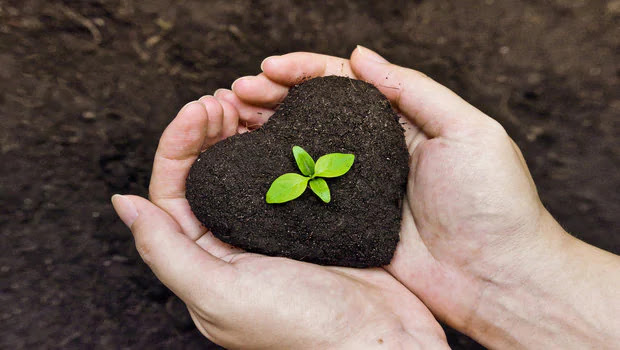organic cultivation
ORGANIC CULTIVATION
WHY ORGANIC?
In this todays world to meet a successful and healthy life ,healthy and hygenic food is very important for this healthy food ,healthy cultivation is important .
healthy cultivation in the terms of free from pesticides , chemicals etc.
the other name of this healthy cultivation is called organic cultivation.
HEALTHY FOOD : contains no chemicals and toxic materials
They are natural and hygenic ,good flavour and taste.
Take care of environment and ecosystem in the concern of cultivation.
ORGANIC FARMING:
organic cultivation is the method of cultivation without disturbing the production and without using synthetic or harmful chemicals and inorganic chemicals
ORGANIC COMPONENTS:
They are different types of organic components in the terms of cultivation.
1.BIOFERTILIZERS
2.GREEN MANURE
3.VERMI COMPOST
4.CROP ROTATION
5.MANURES
6.ANIMAL HUSBANDRY
VERMI COMPOST:
- This is prepared from the excreta of earthworm. This is also called as "FRIEND OF FARMER" because it makes soil porus and helps in the increase the soil fertility.
- The production of vermicpmpost is called as "VERMI CULTURE"
- This is a decomposition process with various worms,decomposed vegetables etc majorly earthworms are used for the preparation of vermicompost.
- Since vermi compost is helpfull to increase the soil fertility ,farmers are producing vermicompost as a allied cultivation or production .
- Vermicompost contains water-soluble nutrients and is an excellent, nutrient-rich organic fertilizer and soil conditioner.It is used in farming and small scale sustainable, organic farming.
- Vermicomposting is the process of "TREATMENT OF SEVAGE". And this process called "VERMI FILTERATION"(or vermidigestion) which is used to remove organic matter, pathogens and waste material from oxygen demand water in the sewage.
PROCESS OF VERMI COMPOSTING:

- Bed Method: This is an easy method in which beds of organic matter are prepared.
- Pit Method: In this method, the organic matter is collected in cemented pits. However, this method is not prominent as it involves problems of poor aeration and waterlogging.
The nutrients profile of vermicomposts are:
- 1.6 per cent of Nitrogen.
- 0.7 per cent of Phosphorus.
- 0.8 per cent of Potassium.
- 0.5 per cent of Calcium.
- 0.2 per cent of Magnesium.
- 1.75 per cent of Iron.
- 96.5 per cent of Manganese.
PROCEDURE:
- Bed Method: This is an easy method in which beds of organic matter are prepared.
- Pit Method: In this method, the organic matter is collected in cemented pits. However, this method is not prominent as it involves problems of poor aeration and waterlogging.
The nutrients profile of vermicomposts are:
- 1.6 per cent of Nitrogen.
- 0.7 per cent of Phosphorus.
- 0.8 per cent of Potassium.
- 0.5 per cent of Calcium.
- 0.2 per cent of Magnesium.
- 1.75 per cent of Iron.
- 96.5 per cent of Manganese.
PROCEDURE:
- To prepare compost, either a plastic or a concrete tank can be used. The size of the tank depends upon the availability of raw materials.
- Collect the biomass and place it under the sun for about 8-12 days. Now chop it to the required size using the cutter.
- Prepare a cow dung slurry and sprinkle it on the heap for quick decomposition.
- Add a layer (2 – 3 inch) of soil or sand at the bottom of the tank.
- Now prepare a fine bedding by adding partially decomposed cow dung, dried leaves and other biodegradable wastes collected from fields and kitchen. Distribute them evenly on the sand layer.
- Continue adding both the chopped bio-waste and partially decomposed cow dung layer-wise into the tank up to a depth of 0.5-1.0 ft.
- Once, after adding all the bio-wastes, release the earthworm species over the mixture and cover the compost mixture with dry straw or gunny bags.
- Sprinkle water on a regular basis to maintain the moisture content of the compost.
- Cover the tank with a thatch roof to prevent the entry of ants, lizards, mouse, snakes, etc. and protect the compost from rainwater and direct sunshine.
- Have a frequent check to avoid the compost from overheating. Maintain proper moisture and temperature.
TYPES OF ORGANIC CULTIVATION:
- To prepare compost, either a plastic or a concrete tank can be used. The size of the tank depends upon the availability of raw materials.
- Collect the biomass and place it under the sun for about 8-12 days. Now chop it to the required size using the cutter.
- Prepare a cow dung slurry and sprinkle it on the heap for quick decomposition.
- Add a layer (2 – 3 inch) of soil or sand at the bottom of the tank.
- Now prepare a fine bedding by adding partially decomposed cow dung, dried leaves and other biodegradable wastes collected from fields and kitchen. Distribute them evenly on the sand layer.
- Continue adding both the chopped bio-waste and partially decomposed cow dung layer-wise into the tank up to a depth of 0.5-1.0 ft.
- Once, after adding all the bio-wastes, release the earthworm species over the mixture and cover the compost mixture with dry straw or gunny bags.
- Sprinkle water on a regular basis to maintain the moisture content of the compost.
- Cover the tank with a thatch roof to prevent the entry of ants, lizards, mouse, snakes, etc. and protect the compost from rainwater and direct sunshine.
- Have a frequent check to avoid the compost from overheating. Maintain proper moisture and temperature.
TYPES OF ORGANIC CULTIVATION:
1. Pure organic farming
it involves the complete use of bio logical ways of cultivation





It was a fabulous work. congrats. keep sharing u r knowledge.
ReplyDeleteGOOD WORK .
ReplyDelete